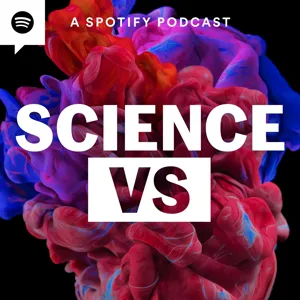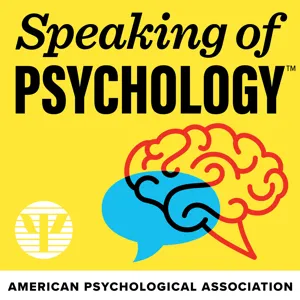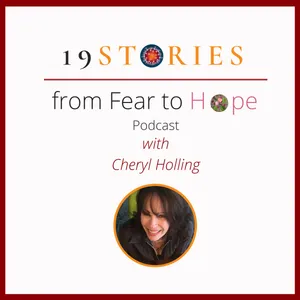Podcast Summary
Understanding the Mind of a Serial Killer: The Case of Ed Kemper: Serial killers can hide their violent tendencies, even while committing gruesome acts, making it crucial to understand their motivations and continue research and vigilance to protect potential victims.
Serial killers, such as Ed Kemper, can be charming and unassuming, hiding their violent tendencies behind normal appearances and behaviors. Kemper, who started killing at a young age and continued into his twenties, was able to kill multiple victims while living a seemingly normal life. He would lure young women into his car under the guise of being a nice guy, only to take them to the woods and kill them. Kemper often decapitated his victims and kept their heads, and in some cases, he even had sex with them post-mortem. Despite his gruesome actions, he was able to fool even his own psychiatrist. This case highlights the importance of understanding the complex and often hidden motivations of serial killers, and the need for continued research and vigilance to protect potential victims.
The Complexities of Serial Killers: Research suggests over 600 US serial killers in past 20 years, mostly men, causes multifaceted and not fully understood, not all leave signature calling cards or play out creepy fantasies
While there is fascination with serial killers in media, the reality is more complex than what is portrayed on screen. Serial killers, according to the FBI, are individuals who have killed at least two people in separate events. Research suggests that over the past two decades, there have been over 600 serial killers in the US, with 9 out of 10 being men. Contrary to popular belief, not all serial killers leave signature calling cards or play out creepy fantasies. Instead, the motivation behind their actions is a subject of ongoing scientific research. The causes of serial killing are multifaceted and not fully understood, but it's believed that a combination of psychological, social, and environmental factors contribute to this behavior. So, the next time you're drawn to a TV show or documentary about serial killers, remember that the complexities of human behavior go beyond what's depicted on screen.
Serial killers in media vs. real life: Research shows that real-life serial killers don't typically leave distinctive calling cards or engage in bizarre behaviors at crime scenes. Common non-homicidal behaviors include sexual assault and dismemberment. Most are caught through means other than crime scene analysis and kill close to home or work.
While serial killers in movies and television shows are often depicted leaving distinctive calling cards or engaging in bizarre behaviors at crime scenes, research suggests that these actions are not as common in real life as portrayed. A study of 90 serial killers found that the most common non-homicidal behaviors were sexual assault and dismemberment of the body, which could be functional in helping to dispose of the victim. However, not all behaviors were functional, and a study of almost 40 serial killers found that 70% did things to their victims that were hard to explain. Serial killers don't typically have the same signature behaviors and most are caught through means other than crime scene analysis, such as being turned in by someone they know or being arrested for another offense. Additionally, most serial killers kill close to home or work.
Serial killers don't always have grand plans or significant reasons for their actions: Serial killers are individuals with a propensity for violence, not monsters with elaborate master plans. They may be sexually or financially motivated.
Serial killers, contrary to popular belief in movies and media, do not always have grandiose plans or significant reasons for their heinous actions. Instead, they are individuals who are inclined to kill multiple times. Some serial killings may be sexually motivated, as seen in the case of Larry Duane Hall who had sex with his victims after killing them due to his preference for them being "warm." Others may be driven by greed, as seen in the case of Herman Mudgett, America's first known serial killer, who killed for financial gain. These individuals are not monsters with elaborate master plans, but rather disturbed individuals with a propensity for violence.
Serial killers' motivations often involve enjoyment: Many serial killers derive pleasure from their crimes, often sexually, contradicting the popular portrayal of them as masterminds or geniuses
The portrayal of serial killers as intelligent masterminds or evil geniuses in movies and true crime documentaries may not always be accurate. While some serial killers may have above-average intelligence, the most common motivation for their crimes is not for the thrill of being a predator or seeing themselves as superior. According to two large surveys, the most common reason serial killers commit their heinous acts is because they derive some kind of enjoyment from it, often of a sexual nature. Serial killers like Herman Mudgett, who dissolved his victims' bodies in quicklime, and the Zodiac Killer, who wrote "I like killing people because it is so much fun," are examples of this. However, it's important to note that every serial killer is different, and their motivations can vary greatly. It's also essential to remember that these individuals commit unspeakable acts of violence and harm to innocent people, making their crimes unforgivable.
Serial Killers Aren't Super-Intelligent Geniuses: Most serial killers don't have exceptional intelligence, they kill for enjoyment, and the cause of their actions is still debated.
Serial killers, contrary to popular belief, are not necessarily super-intelligent geniuses. Research shows that most serial killers have average or even below-average intelligence. While there are exceptions, such as Ed Kemper with an IQ of around 140, they are not the norm. The idea of many evil geniuses running around plotting to kill people is not supported by the data. Instead, most serial killers kill for enjoyment, without any clear identifiable emotional response. The question of whether they are born that way or if something happens to them is still a topic of debate. Some argue that they are born psychopaths, meaning they lack empathy and seem normal but can hurt people without remorse. However, not all serial killers show signs of psychological disorders before they are caught. For instance, the notorious BTK killer, Dennis Rader, was a respected member of his community before his crimes were discovered.
Why do some individuals become serial killers?: Serial killing causes are complex and multifaceted, possibly involving a combination of genetic and environmental factors, including childhood exposure to violence and abuse.
There is no clear-cut answer as to why some individuals become serial killers, and it's not as simple as assuming they lack empathy or are psychopaths. While some studies suggest a possible link between low empathy and violence, the relationship is not straightforward. Serial killers do not necessarily score high on psychopathy tests, and many do not exhibit the typical characteristics of psychopaths. Some researchers have looked at brain abnormalities as potential explanations, but even these findings are not definitive. One intriguing study found that childhood exposure to violence is a significant risk factor for becoming a killer. Additionally, serial killers are more likely to have been abused as children, physically, sexually, or psychologically, compared to the general population. These findings suggest that a combination of genetic and environmental factors may contribute to the development of serial killing behavior. In summary, while there may be some underlying biological or psychological factors, the causes of serial killing are complex and multifaceted.
The motivations behind serial killing remain a mystery: Serial killers are complex individuals, but most homicides are committed by people known to the victim, focusing on community safety is more important.
While there are theories about the causes of serial killing, such as childhood trauma and animal cruelty, the motivations behind this rare and disturbing crime remain largely a mystery. Serial killers are typically men who rape and brutalize their victims before or after killing them, but the reasons for their actions are complex and not fully understood. It's important to remember that while we may be fascinated by the stories of serial killers, the reality is that the likelihood of becoming a victim of one is extremely low. In fact, most homicides are committed by people known to the victim, rather than strangers. The sensationalization of serial killers in popular culture can distract us from the more common and pressing dangers in our own lives. So, while it's natural to be curious about the minds of serial killers, it's also important to keep things in perspective and focus on the realities of crime and safety in our communities.
Researchers' Role in Addressing Societal Issues: Researchers contribute significantly to understanding and addressing societal issues through expertise, dedication, and collaboration, leading to effective prevention, intervention, and healing strategies.
The crucial role researchers play in understanding and addressing various societal issues, from cyberbullying and online harassment to crime investigation and child abuse. Their expertise and dedication contribute significantly to developing effective strategies for prevention, intervention, and healing. We had the privilege of speaking with several esteemed researchers, including Doctors Mike Amott, Anne Burgess, Scott Lilianfield, Devin Polishek, Corey Ryan, Kim Rossmo, David Finkelhor, David Keatley, Jennifer Lansford, Karen Franklin, Michael Maltz, Gabrielle Salvati, Claire Ferguson, Sandra Taylor, and Katherine Ramsland. Their insights shed light on the complexities of these issues and the importance of ongoing research to address them. Their work underscores the need for a multidisciplinary approach to addressing societal challenges, with researchers collaborating across fields to develop comprehensive solutions. By understanding the root causes of these issues and the impact they have on individuals and communities, researchers can help create a safer, more inclusive world for all. In conclusion, the research community plays a vital role in addressing the complex societal issues discussed in this episode. Their expertise, dedication, and collaboration are essential in developing effective strategies for prevention, intervention, and healing.






